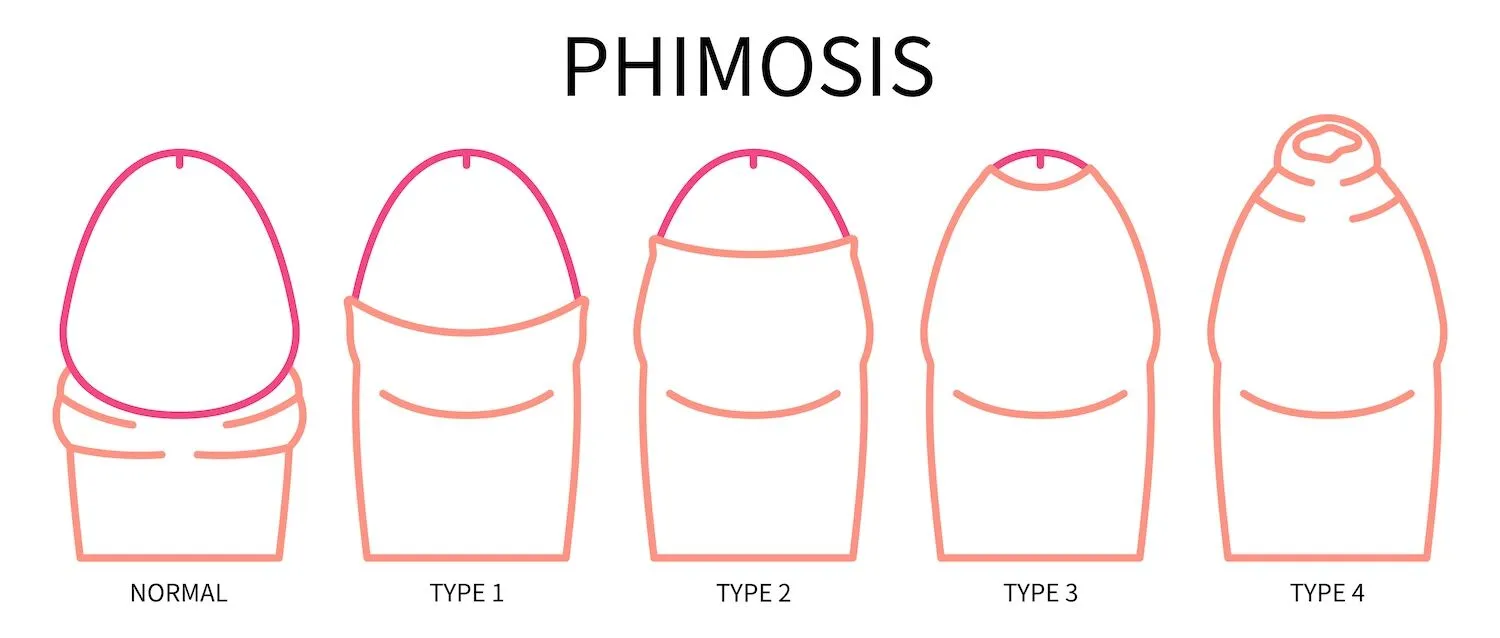What Is Phimosis?
Phimosis is a condition in which the foreskin (prepuce) of the penis cannot be fully retracted over the glans (head) of the penis. It can be a normal developmental stage in young boys or a medical issue in adolescents and adults, depending on the cause and severity.
There are two main types:
-
Physiological Phimosis – Naturally occurring in infants and young boys; usually resolves on its own with age.
-
Pathological Phimosis – Caused by scarring, infection, inflammation, or trauma. It is more likely to cause symptoms and may require treatment.
Symptoms of Phimosis
Many cases are asymptomatic. However, when symptoms do occur, they may include:
-
Difficulty retracting the foreskin
-
Pain during urination or erections
-
Swelling or ballooning of the foreskin during urination
-
Recurrent infections (e.g. balanitis or balanoposthitis)
-
Redness, cracking, or thickened foreskin
-
Painful intercourse (in adults)

Diagnosis
Phimosis is typically diagnosed through a physical examination. No imaging or laboratory tests are usually required unless there are signs of infection or other complications.
Your doctor may also assess:
-
Urinary symptoms
-
Signs of infection or inflammation
-
History of diabetes, as this can contribute to recurrent infections and poor skin healing
Treatment Options
Treatment depends on age, severity, and symptoms.
1. Non-Surgical Management:
-
Topical corticosteroids: Applied to the foreskin daily to reduce inflammation and promote gentle stretching.
-
Gentle manual stretching: Done over time, often in combination with creams.
-
Improved hygiene: Especially important in boys and adults prone to infections.
2. Surgical Options:
-
Circumcision: Complete removal of the foreskin. Often recommended for recurrent or severe cases.
-
Preputioplasty: A less invasive surgical procedure that preserves the foreskin by making small incisions to widen it.
-
Dorsal slit procedure: Sometimes performed in emergency situations (e.g. severe infection or paraphimosis).
When to Seek Medical Advice
You should consult a GP or urologist if:
-
The foreskin is painful or impossible to retract after age 7–10
-
There are recurrent infections
-
Urination is painful or obstructed
-
There is scarring, cracking, or bleeding of the foreskin
-
The condition affects sexual function or quality of life
